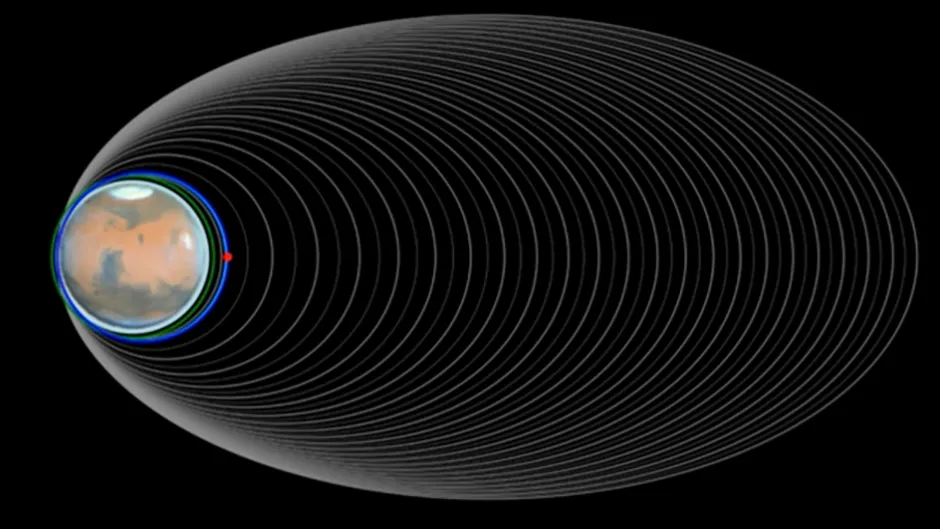ESA's ExoMars orbiter is ready to start ‘sniffing’ the Red Planet, looking for methane in the Martian atmosphere.The orbiter arrived at Mars in October 2016 to investigate the geological, and perhaps even biological, origin of some of the trace gases that make up less than one per cent of the planet's atmosphere.
Initially, the spacecraft was in a highly elliptical orbit which extended as far as 98,000km away from the surface.
In order to sample the Martian atmosphere, ExoMars has had to move into a circular orbit 200km above the planet.
“Since March 2017, we’ve been conducting a terrifically delicate ‘aerobraking’ campaign, during which we commanded it to dip into the wisp, upper-most tendrils of the atmosphere once per revolution, slowing the craft and lowering its orbit,” says Michel Denis, a flight director from ESA.
Aerobraking works by using the atmosphere’s drag on the solar panels to reduce the spacecraft’s speed by a tiny amount, which adjusts it orbit.
As Mars’s atmosphere is very thin, the spacecraft only decelerates by at most 17mm/s every second.

At that rate, it would take 13.5 minutes and 6km for a car travelling 50km/hr to stop.
“Aerobraking works only because we spent a significant time in the atmosphere during each orbit, and then repeated this over 950 times,” says Denis.
“Over a year we’ve reduced the speed of the spacecraft by an enormous 3,600km/h, lowering its orbit by the necessary amount.”
Now that it is in place, ExoMars will ‘smell’ Mars’s atmosphere, looking for trace gases, such as the organic compound methane.
Methane has been detected in the planet’s atmosphere before now, but it appeared to come and go, suggesting it is being actively produced or released from the planet.
This has been of great interests to exobiologists, as on Earth methane is one of the major gases produced by biological processes and it is thought that the gas could be a sign of life on the Martian surface.

